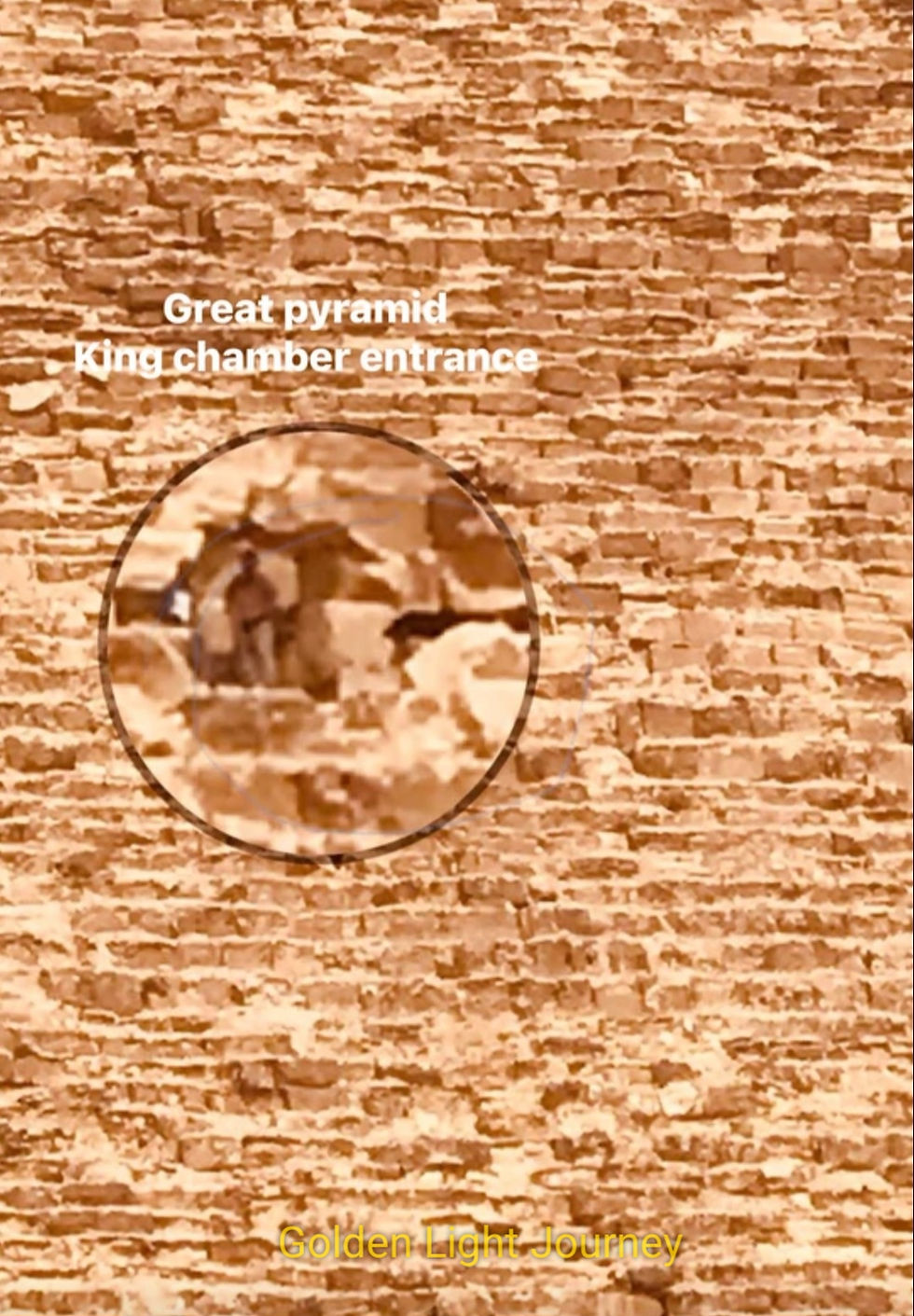
The Mystery of the Granite Box in the Great Pyramid
- goldenlightjourney
- Aug 29
- 3 min read
Deep within the heart of the Great Pyramid of Giza lies the King’s Chamber, a remarkable space containing a solitary stone coffer commonly referred to as the sarcophagus.

This rectangular box, carved from a single block of red granite, measures 7.5 feet long, 3.3 feet wide, and 3.5 feet high. Positioned near the western wall of the chamber, it sits slightly off-center, its smooth, undecorated surface marked by visible damage, chips and cracks along its edges, particularly its front left side. The inclusion of this stone coffer in the chamber raises a perplexing question: how was it brought into this sealed chamber?

The entrance to the King’s Chamber is a narrow passage, measuring just 3.4 feet high and 3.5 feet wide, far too small to accommodate the coffer’s dimensions. This discrepancy has long puzzled archaeologists, engineers, and visitors alike.

To reach the King’s Chamber, any object, including the coffer, would have needed to navigate a series of tight, arduous tunnels within the pyramid. The most direct route, the Ascending Passage, is a narrow 3.5 feet high and 3.9 feet wide, with a steep incline of 26 degrees stretching over 129 feet.

Even narrower is the horizontal passage leading directly into the chamber, which constricts further in places. These confined spaces, combined with their extreme angles, make it seemingly impossible to maneuver an object as large (7.5 feet) and heavy (estimated at 2.5 tons) as the granite sarcophagus through them.
For centuries, observers have marvelled at this enigma, concluding that the sarcophagus could not possibly have been brought into the King’s Chamber after the pyramid’s completion. Instead, many propose it was placed during construction, with the pyramid meticulously built around it.
The Queens Chamber, located lower in the pyramid, faces similar constraints with its own narrow access tunnels, reinforcing the idea that large items were integrated into the design from the outset, either remaining in situ, or having been broken up while attempting to access their contents and later removed.
Yet, a lesser-known discovery offers an alternative explanation. On the south side of the King’s Chamber, a modern air ventilation fan hums quietly away, its aim - to improve the comfort of the thousands of visitors entering the chamber each day, an addition that sheds light on the pyramid’s secrets.


In the late 20th century, an engineer working within the chamber uncovered a hidden tunnel behind a granite block in the southern wall. This passage, wide enough for the engineer to crawl through while carrying equipment, stretches to the pyramid’s exterior. The engineer installed the ventilation unit on the outside of the pyramid, to circulate air through the tunnel into the chamber, improving conditions for visitors and researchers.

Intriguingly, this tunnel, unlike the pyramid’s other passages, could have served as a means to transport the sarcophagus into the King’s Chamber after all. Once inside, the passage could have been sealed with the granite block from within, concealing the method of entry. Arguments about the weight of the stones above would make this unfeasible can be dismissed - it is still there with the vent being physically installed.


Today, with a telephoto lens, one can spot the air ventilation unit protruding from the south face of the Great Pyramid (as shown), proving a subtle clue to this hidden access. This insight comes, not from speculation, but from the firsthand knowledge of a Wisdom Keeper and Guide of the Giza Pyramids, who has studied and explored the monument for over 40 years, Sayed Adli Bdaway - an expert in what lies above and below the surface of the Giza Plateau Pyramids area.
The sarcophagus’s journey from the Aswan Quarry, 800 miles South of Giza, to its installation in the King's Chamber, it seems, may not be as impossible as once thought. Often the simplest answers can be found directly, rather than complex solutions given through speculation. This bridges ancient engineering with modern discovery in one of history’s greatest architectural wonders.
Sayed Adli Bdaway




Comments